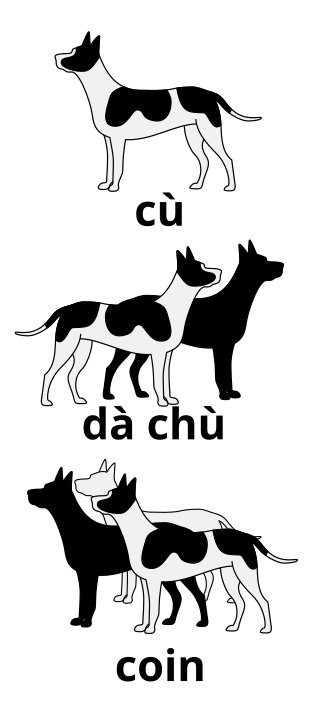Esperanto is the most widely used constructed language intended for international communication; it was designed with highly regular grammatical rules, and as such is considered an easy language to learn.

Ido is a constructed language derived from Reformed Esperanto, and similarly designed with the goal of being a universal second language for people of diverse backgrounds. To function as an effective international auxiliary language, Ido was specifically designed to be grammatically, orthographically, and lexicographically regular. It is the most successful of the many Esperanto derivatives, called Esperantidoj.
English grammar is the set of structural rules of the English language. This includes the structure of words, phrases, clauses, sentences, and whole texts.
The Finnish language is spoken by the majority of the population in Finland and by ethnic Finns elsewhere. Unlike the languages spoken in neighbouring countries, such as Swedish and Norwegian, which are North Germanic languages, or Russian, which is a Slavic language, Finnish is a Uralic language of the Finnic languages group. Typologically, Finnish is agglutinative. As in some other Uralic languages, Finnish has vowel harmony, and like other Finnic languages, it has consonant gradation.
This article outlines the grammar of the Dutch language, which shares strong similarities with German grammar and also, to a lesser degree, with English grammar.
Russian grammar employs an Indo-European inflexional structure, with considerable adaptation.
This article describes the grammar of Afrikaans, a language spoken in South Africa and Namibia which originated from 17th century Dutch.
An Esperantido is a constructed language derived from Esperanto. Esperantido originally referred to the language which is now known as Ido. The word Esperantido contains the affix (-ido), which means a "child, young or offspring". Hence, Esperantido literally means an 'offspring or descendant of Esperanto'.
Adjuvilo is a constructed language created in 1910 by Claudius Colas under the pseudonym of "Profesoro V. Esperema". Although it was a full language, it may not have been created to be spoken. Many believe that as an Esperantist, Colas created Adjuvilo to help create dissent in the then-growing Ido movement. Colas himself called his language simplified Ido and proposed several reforms to Ido.
The grammar of the Polish language is complex and characterized by a high degree of inflection, and has relatively free word order, although the dominant arrangement is subject–verb–object (SVO). There commonly are no articles, and there is frequent dropping of subject pronouns. Distinctive features include the different treatment of masculine personal nouns in the plural, and the complex grammar of numerals and quantifiers.
Romanian nouns, under the rules of Romanian grammar, are declined, varying by gender, number, and case.
Esperanto and Novial are two different constructed international auxiliary languages. Their main difference is that while Esperanto is a schematic language, with an unvarying grammar, Novial is a naturalistic language, whose grammar and vocabulary varies to try to retain a "natural" sound. Demographically, Esperanto has thousands of times more speakers than Novial.
Ukrainian grammar is complex and characterised by a high degree of inflection; moreover, it has a relatively free word order, although the dominant arrangement is subject–verb–object (SVO). Ukrainian grammar describes its phonological, morphological, and syntactic rules. Ukrainian has seven grammatical cases and two numbers for its nominal declension and two aspects, three tenses, three moods, and two voices for its verbal conjugation. Adjectives agree in number, gender, and case with their nouns.

In linguistic morphology, inflection is a process of word formation in which a word is modified to express different grammatical categories such as tense, case, voice, aspect, person, number, gender, mood, animacy, and definiteness. The inflection of verbs is called conjugation, and one can refer to the inflection of nouns, adjectives, adverbs, pronouns, determiners, participles, prepositions and postpositions, numerals, articles, etc., as declension.
This article deals with the grammar of the Komi language of the northeastern European part of Russia
Intal is an international auxiliary language, published in 1956 by the German linguist Erich Weferling. Its name is an acronym for INTernational Auxiliary Language. Intal was conceived to unite the most important features of existing international auxiliary languages, like Esperanto, Ido, Occidental-Interlingue, Neo, Novial and Interlingua, into a compromise system.
This article concerns the morphology of the Albanian language, including the declension of nouns and adjectives, and the conjugation of verbs. It refers to the Tosk-based Albanian standard regulated by the Academy of Sciences of Albania.
Langue nouvelle is a grammatical sketch for a proposed artificial international auxiliary language presented in 1765 by Joachim Faiguet de Villeneuve, a French economist, in the ninth volume of Diderot's encyclopedia. It is likely that it influenced Volapük, Esperanto, and other language projects of the 19th century.
This article describes the grammar of the Old Irish language. The grammar of the language has been described with exhaustive detail by various authors, including Thurneysen, Binchy and Bergin, McCone, O'Connell, Stifter, among many others.
The grammar of the Silesian language is characterized by a high degree of inflection, and has relatively free word order, although the dominant arrangement is subject–verb–object (SVO). There commonly are no articles, and there is frequent dropping of subject pronouns. Distinctive features include the different treatment of masculine personal nouns in the plural, and the complex grammar of numerals and quantifiers.


